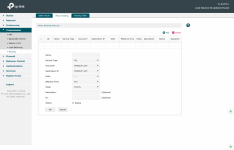Hi,
I currently run a LAN server behind my Asus Router. It connects to a commercial VPN provider as a client and this is the router for all WAN access. Because of this, as you will be aware better than I, it tunnels through the router before being visible to the Internet and this means that it is not by default accessible to the WAN in reverse.
On my home LAN however, I have normal access to the device through the local IP4 address and can access the files and apps without a problem from any LAN device. However, there is an app on the LAN server that I would like to have access to from the WAN. I thought I may be able to set up port forwarding (I have a Dynamic DNS configured) as I assumed that the router would treat the port forward as a tunnel to the LAN server. But that assumption is incorrect (probably as there are layers of settings attached to the IP4 protocol that means the LAN server knows the requests originates outside the LAN ... I am not very familiar with all the network protocols).
I wonder whether there is a solution to this problem? Essentially to open up 1 port to allow a connection to the LAN server so that I can access just this one app externally?
Thanks in advance...
I currently run a LAN server behind my Asus Router. It connects to a commercial VPN provider as a client and this is the router for all WAN access. Because of this, as you will be aware better than I, it tunnels through the router before being visible to the Internet and this means that it is not by default accessible to the WAN in reverse.
On my home LAN however, I have normal access to the device through the local IP4 address and can access the files and apps without a problem from any LAN device. However, there is an app on the LAN server that I would like to have access to from the WAN. I thought I may be able to set up port forwarding (I have a Dynamic DNS configured) as I assumed that the router would treat the port forward as a tunnel to the LAN server. But that assumption is incorrect (probably as there are layers of settings attached to the IP4 protocol that means the LAN server knows the requests originates outside the LAN ... I am not very familiar with all the network protocols).
I wonder whether there is a solution to this problem? Essentially to open up 1 port to allow a connection to the LAN server so that I can access just this one app externally?
Thanks in advance...




